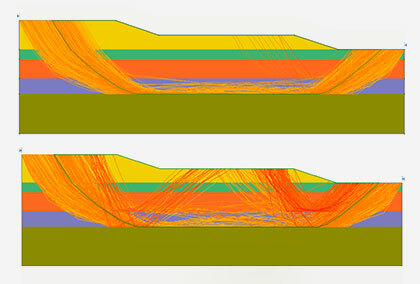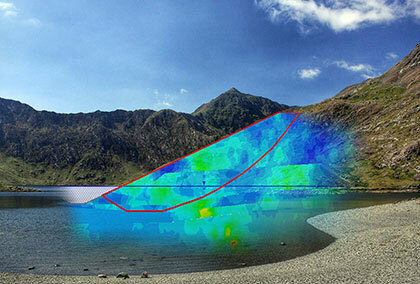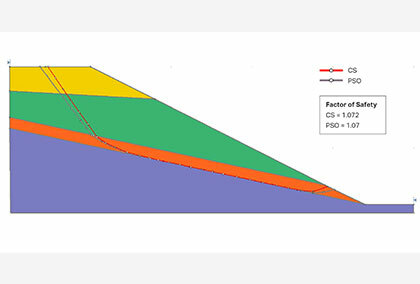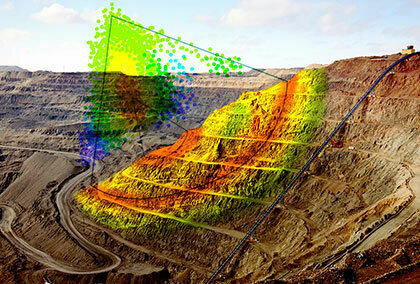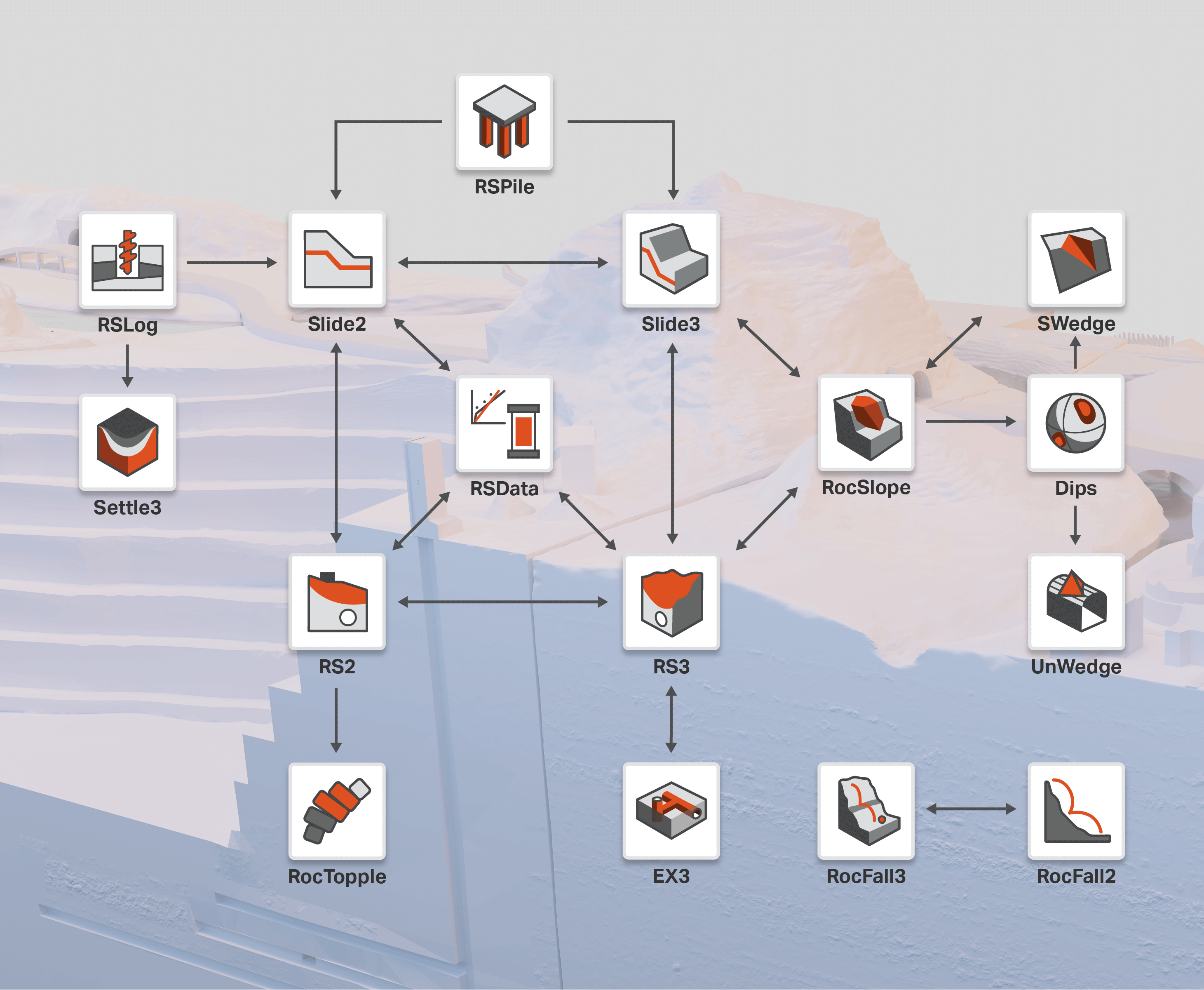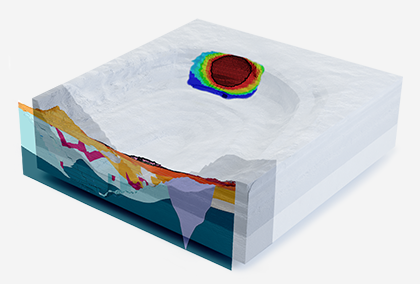Slide3's New Search Surface Type & Fast Weak Layer Algorithm
- Terence Ma, Geotechnical Project Manager at Rocscience
- Sina Javankhoshdel, Geomechanics Product Manager
Slide3 has the most advanced searching capabilities for identifying slip surfaces out of any 3D limit equilibrium program, and it’s only getting better with the upcoming release.
Introducing the New Spline Search Surface
The search process for the critical slip surface typically involves two stages:
- Global searching via swarm intelligence methods (Particle Swarm or Cuckoo Search), followed by
- Local refinement of the slip surface via Surface Altering Optimization.
Until recently, the shapes of the slip surfaces generated during the global searching stage were limited to basic shapes such as ellipsoids, spheres or wedges. Spline surfaces are a new surface type that has been added to Slide3. They are much more flexible than ellipsoids, able to morph into just about any shape, and as such, tend to find lower factors of safety more often.
In our extensive testing of hundreds of Slide3 models, Spline outperformed ellipsoid in 80% of cases.
An example of a result for a coal mine obtained during the global searching stage is shown below, showing FS = 1.96 using splines whereas the ellipsoid search could only find FS = 2.19.
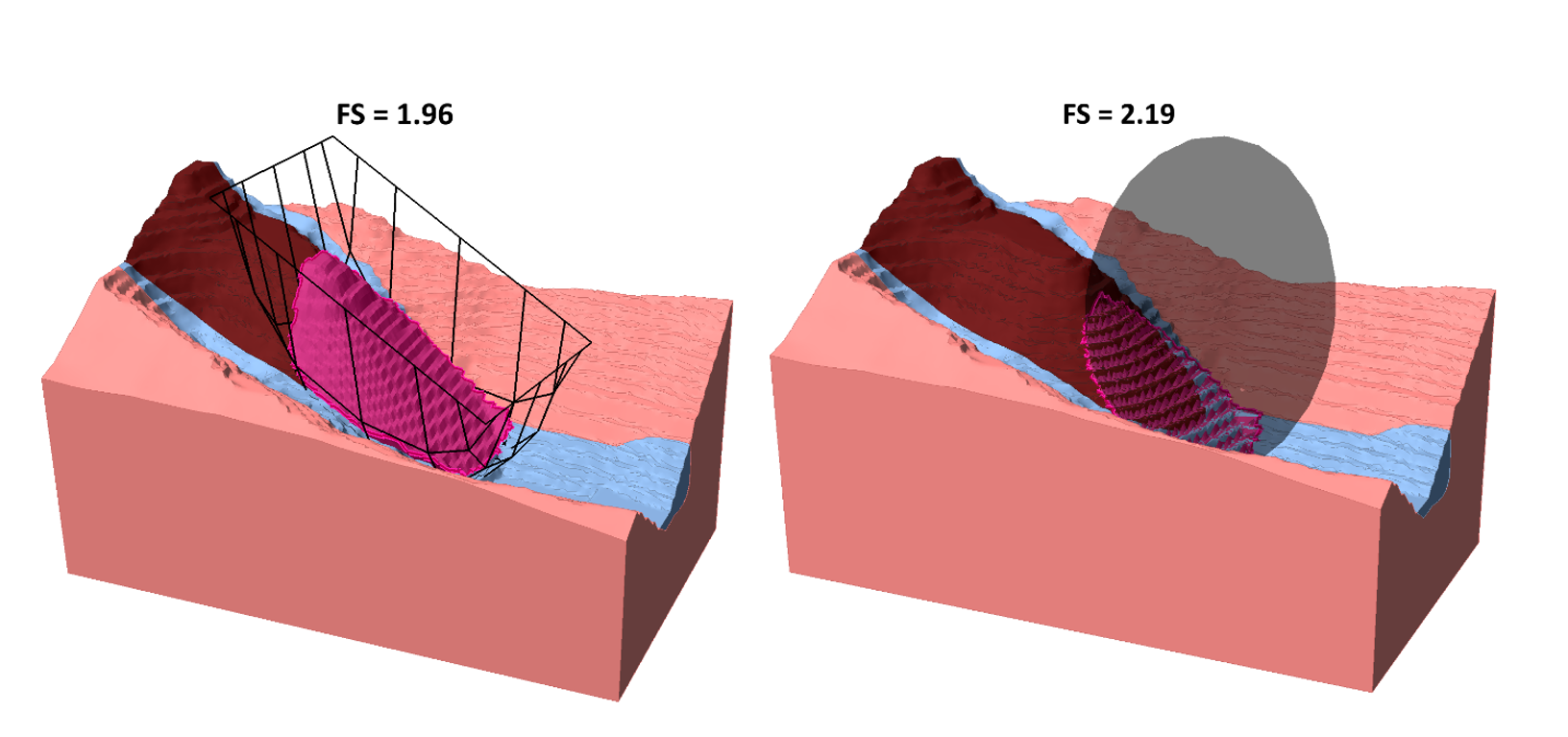
Owing to the superior performance of the new Spline slip surface type, it will be the new default selection for the program in v3.021. If you have an existing model, you can try it out via Slip Surface Options > Surface Type > Spline.
An additional benefit of the spline search method is that the local optimization of the slip surface during Surface Altering can now directly alter the spline surface. In the past, the ellipsoids obtained during the global search needed to be converted into splines, which resulted in a loss of precision.
Heuristic Weak Layer Handling
Weak layers can be used by the program to cut slip surfaces during the search. Surfaces that have been cut by a weak layer will adopt the material properties of the weak layer at the cutting location.
There are cases where a weak layer may not necessarily reduce the factor of safety when it cuts a slip surface, such as in the example below. Suppose clipping the given spherical slip surface to the red layer reduces its factor of safety, but clipping to the orange layer would result in a higher factor of safety.
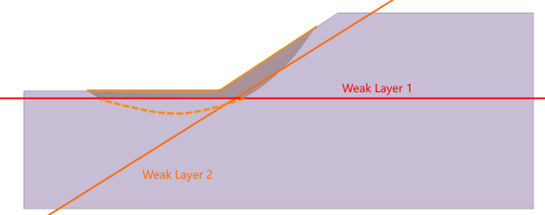
Until now, the options for weak layers have been to either:
- Consider all the possible combinations of weak layers via Automatic case generation, or
- Always snap to the highest (in this case, both weak layers).
The Automatic case generation feature is very rigorous and can lead to slowdowns in the computations if there are many weak layers in the program. The Always snap to the highest feature is much faster but should only be relied on if cases like the above do not exist in the model.
In the upcoming release of Slide3, version 3.021, there will be a new option, Heuristic, accessible via Surface Options > Weak layer handling), which performs much faster than the rigorous approach, while maintaining accuracy in searching. Note that it is only compatible with Particle Swarm Optimization, as discussed in the following section.
Because this new method is incorporated into the Particle Swarm algorithm, using the Heuristic weak layer handling method has a similar computation time to running the model without weak layers at all.
Particle Swarm Optimization
Particle Swarm is becoming the new default search method in place of Cuckoo Search in Slide3, for the following reasons:
- It is more popular across all fields of engineering and computing.
- It runs faster than Cuckoo Search (especially when using the new Spline surfaces) given the same number of iterations.
- It is compatible with the new heuristic weak layer handling method.
It is much easier to understand and is explained in the following paragraph.
Particle Swarm is a swarm intelligence method which simulates the behavior of swarming animals in nature to find an optimal solution (in this case, minimum FS) in the search space.
The new Heuristic weak layer handling feature uses Particle Swarm by considering the state of each weak layer (whether it is used to clip a given slip surface) as an additional variable in the optimization problem. In this way, the weak layers are considered at the same time as the searching occurs, which saves time in the analysis.
The iterative searching process is illustrated in the following figure:
- Initially, particles representing potential solutions to the optimization problem (in this case, spherical surfaces) are pseudo-randomly generated.
- During each iteration, a particle moves towards three influences: its individual best solution so far, the global best solution so far, and its current velocity (part b).
- The factor of safety at the new location is computed in the following iteration.
- The process is repeated as all particles are moved during each iteration.
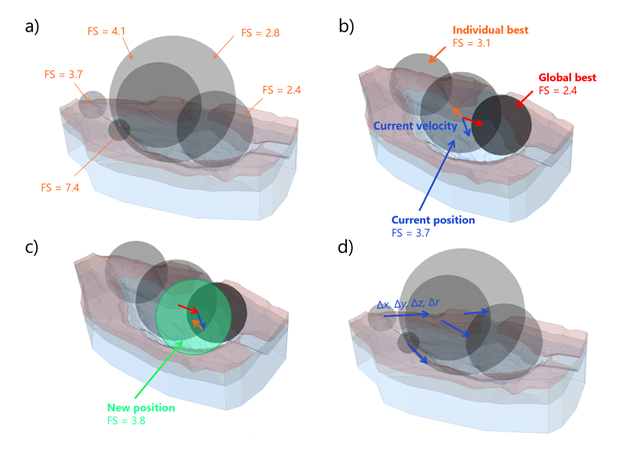
Eventually, the particles will converge to a minimum solution. Note, however, that due to the nonlinear nature of the optimization problem and pseudo-random nature of the algorithm, it is possible for different instances and variations of the search to present different results.
It is also possible for the method to converge to a local minimum solution, rather than the global one. For large and/or complicated models, we recommend trying a variety of search methods and using Slope Limits to refine and narrow down the search process. You can visit this tutorial to learn more about this feature.
